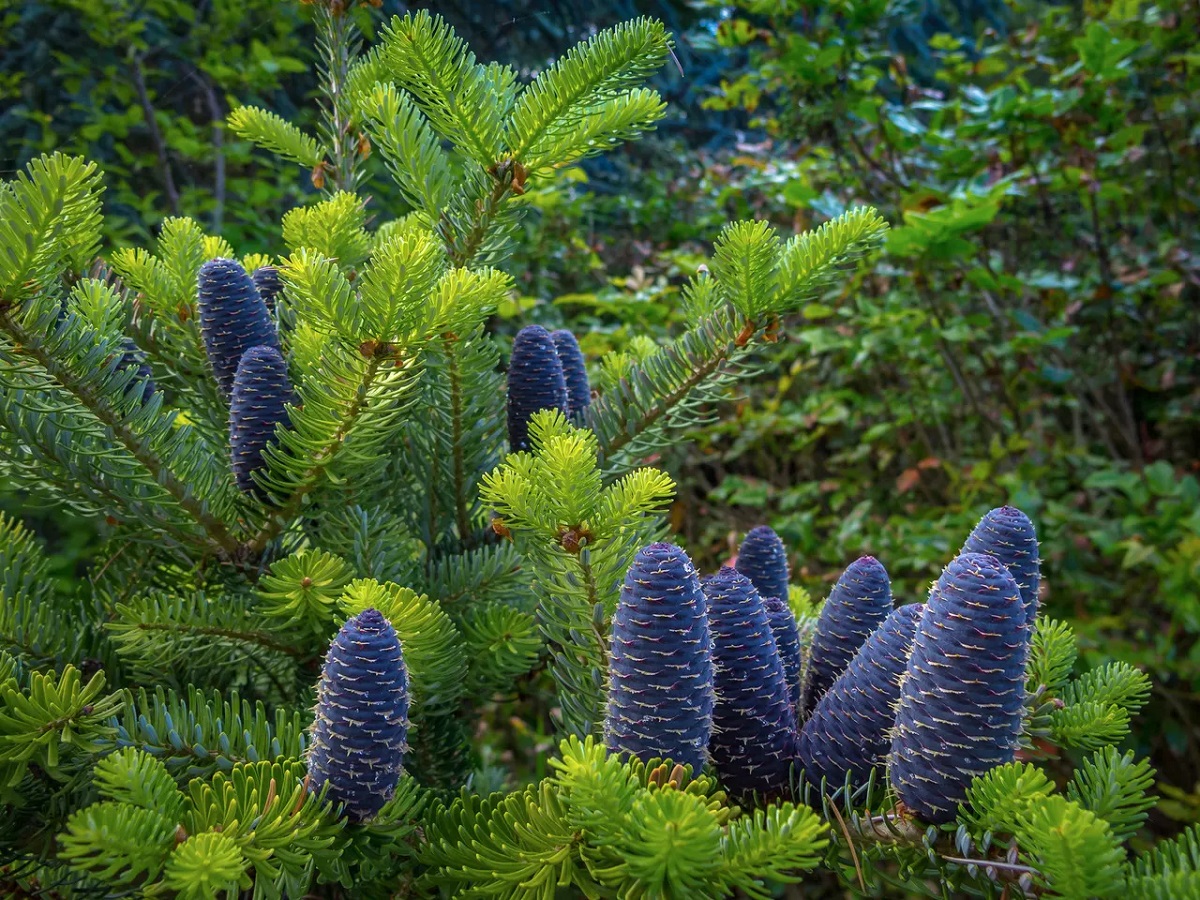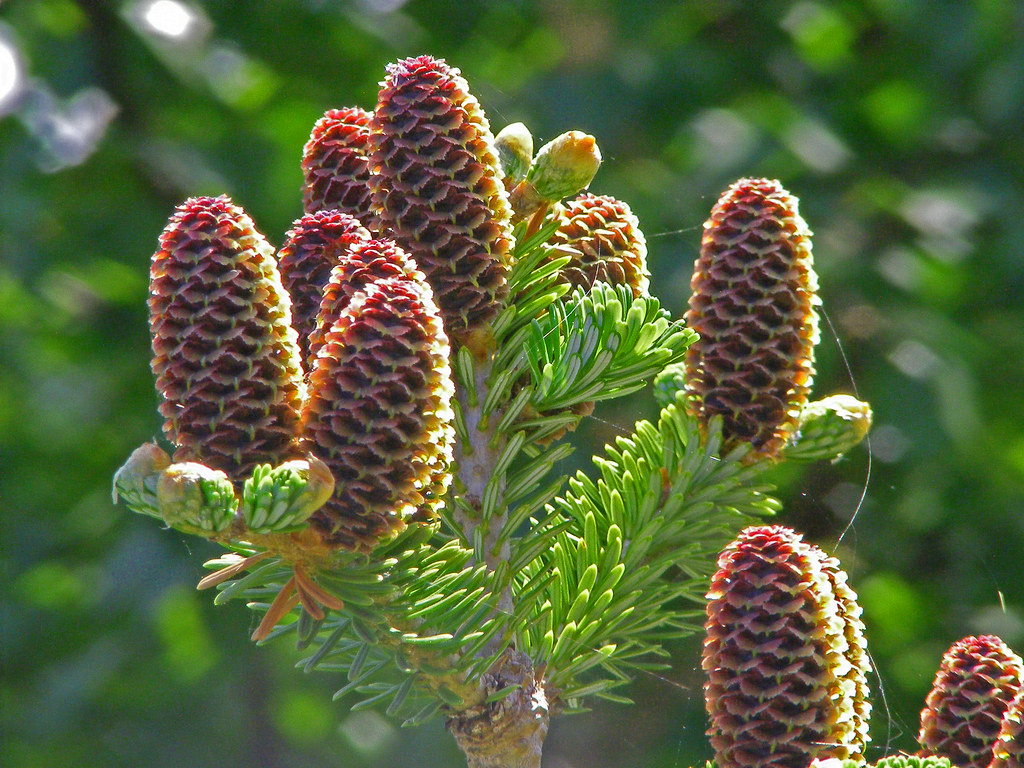Sapin de Corée - Soins, Culture, Variétés et Problèmes
Le sapin de Corée est une belle espèce de la famille des pinacées. Il pousse naturellement, bien qu'il devienne un arbre populaire dans les cours des maisons, où il est beaucoup plus court. La culture d'un sapin de Corée n'est pas compliquée, et la plante n'est pas très exigeante. Mais il faut s'assurer de suivre les règles d'entretien de base - vous pouvez les apprendre dans le texte ci-dessous. Découvrez si le sapin de Corée est le bon arbre pour vous.

Le sapin de Corée - de quelle espèce d’arbre s’agit-il ?
Le sapin de Corée (Abies koreana) est l’une des espèces les plus populaires de la famille des pinacées. Son nom implique les origines de cette plante. La péninsule coréenne est son habitat naturel. Le sapin de Corée a souvent été utilisé dans les cours des maisons, partout dans le monde.
Dans son habitat naturel, le sapin de Corée est assez grand, puisqu’il peut atteindre jusqu’à 12 mètres de hauteur. C’est un peu différent s’il est cultivé dans un jardin. Dans ce cas, sa hauteur normale est généralement de 5-7 mètres, ce qui est tout de même impressionnant.
L’apparence du sapin de Corée est très caractéristique. Sa forme est légèrement conique, et l’arbre développe de nombreuses branches. Ce qui le différencie des autres espèces sont les aiguilles très courtes et les grands cônes violets. Ils décorent magnifiquement l’arbre.

Quelles sont les meilleures conditions pour un sapin de Corée ?
L’Abies koreana n’est pas très exigeant quant au sol dans lequel il pousse. Le sol peut être sablonneux et acide. Il est parfait si le sol est fertile - de cette façon, vous pouvez vous attendre à une croissance rapide de l’arbre. La seule exception dans ce cas est le sol alcalin - le sapin de Corée ne le tolère pas.
Quant à l’emplacement dans le jardin, la mi-ombre est le meilleur endroit. Bien que le sapin de Corée soit résistant aux sécheresses, veillez à ce que le sol reste relativement humide.
Sapin de Corée - variétés remarquables
Comme beaucoup d’autres conifères, le sapin de Corée possède plusieurs variétés. Grâce à cela, on peut choisir la meilleure espèce pour l’assortir aux autres plantes du jardin. Jetez un coup d’œil aux variétés les plus populaires :
- Aurea - les aiguilles ont une teinte jaune, l’arbre se caractérise par un taux de croissance lent,
- Green Carpet - c’est une variété rampante qui pousse en largeur plutôt qu’en hauteur,
- Blauer Pfiff - les aiguilles de cet arbre ont une teinte bleutée,
- Verdener Dom - un sapin élancé aux aiguilles d’un vert intense,
- Blue Emperor - une variété d’un port dense avec des aiguilles bleu-vert,
- Brevifolia - un sapin nain de Corée, parfait pour les rocailles,
- Golden Glow - une variété aux aiguilles légèrement jaunes avec un port dense et régulier,
- Kohout’s Icebreaker - une des dernières variétés de sapin coréen, un arbre à croissance lente qui est greffé sur un tronc,
- Pinocchio - un autre sapin coréen nain, également greffé sur un tronc,
- Kórnik - une variété de sapin coréen polonais, il pousse très lentement et est très résistant aux fortes gelées et à la pollution,
- Tundra - une variété miniature de port globulaire,
- Silberlocke - une variété exceptionnelle aux aiguilles légèrement tordues.

Le sapin de Corée doit-il être taillé ?
L’arbre n’a pas besoin d’être taillé régulièrement. Mais vous pouvez le faire si vous souhaitez modifier sa forme. Si vous décidez de le tailler, vous devez vous en tenir à certaines dates recommandées. La meilleure période pour tailler un sapin de Corée est avril ou juin. C’est à ce moment-là que l’arbre peut bien le tolérer.
Sapin de Corée - paillage et fertilisation
Bien que le sapin de Corée ne soit pas difficile à cultiver et ne nécessite pas beaucoup de soins, le mulching est la base absolue. Il est effectué pour retenir l’humidité dans le sol, afin que l’arbre n’ait pas besoin d’être arrosé fréquemment.
La fertilisation du sol dans lequel pousse le sapin de Corée est une autre question importante. Ce n’est pas difficile, car cela ne doit être fait qu’au printemps, lorsque le jardin se réveille à la vie. Vous pouvez utiliser un produit spécial à plusieurs ingrédients que vous trouverez dans n’importe quel magasin de jardinage.

Sapin de Corée - semis et propagation
La culture d’un sapin de Corée n’est pas difficile. Mais la propagation de la plante est un tout autre problème. Dans ce cas, les jardiniers expérimentés utilisent des boutures, mais elles ont tendance à prendre racine lentement ou de manière incorrecte. La culture d’un sapin de Corée à partir de graines est une bien meilleure option. Elle doit être effectuée au début du printemps.
- the seeds are retrieved in fall and left to chill – so-called stratification,
- in spring, they need to be soaked before planting.
Comment stratifier les graines de sapin de Corée ?
La stratification des graines de sapin de Corée est une procédure assez simple. Il suffit de préparer des tampons de coton imbibés d’eau et d’y déposer les graines. Pliez chaque tampon en deux, mettez-le dans un sac ziplock et mettez-le au réfrigérateur.

Quelles sont les maladies courantes du sapin de Corée ?
Le sapin de Corée est un arbre assez durable. Néanmoins, il peut être attaqué par diverses maladies. Généralement, il s’agit de maladies fongiques. Dans ce cas, les problèmes les plus courants sont :
- rouille des arbres,
- brûlure des rameaux,
- botrytis.
Sapin de Corée - ravageurs
Outre les maladies, le sapin de Corée peut également être attaqué par divers ravageurs. Les pucerons sont les plus courants. Mais ce ne sont pas les seuls insectes. Les tétranyques peuvent apparaître entre les aiguilles. Dans les deux cas, vous pouvez vous débarrasser du problème en utilisant des remèdes naturels. Une infusion d’oignons ou d’ail, ou une bouillie d’orties sont de bonnes options.

📍 Quand planter le sapin de Corée ?
Le sapin de Corée est généralement planté dans les jardins entre août et septembre. Si vous avez manqué cette période, vous pouvez également planter l'arbre en octobre, à condition qu'il n'y ait pas de gelées. Le sapin de Corée peut également être planté dans un conteneur - dans ce cas, il n'y a pas de date de plantation particulière recommandée.
📍 Pourquoi mon sapin coréen devient-il jaune ?
Les sapins de Corée jaunissent surtout à cause du manque d'eau - c'est la raison la plus courante, mais pas la seule. Les aiguilles qui jaunissent peuvent être le résultat de branches endommagées, du gel ou de parasites.
📍 Quel est le taux de croissance du sapin coréen ?
Le sapin de Corée est un arbre à croissance rapide, même si cela dépend beaucoup de la variété. Les arbres de ce type atteignent généralement 1 à 2 mètres de haut après 10 ans. La hauteur maximale est atteinte après 50-60 ans.
📍 Sapin de Corée - quel est le meilleur emplacement pour la plante ?
Le sapin de Corée peut pousser pratiquement partout, quelles que soient les conditions du sol. Vous pouvez le planter dans un sol fertile ou sablonneux. Les sols alcalins sont la seule exception.
Articles de fond




